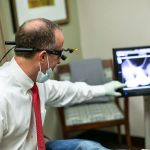How to Deal with Teeth That Are Not Aligned Properly
- 1. Understanding Teeth Alignment Issues
- 2. Causes of Misaligned Teeth
- 3. Treatment Options for Misaligned Teeth
- 4. Benefits of Correcting Teeth Alignment
- 5. Real-Life Examples of Successfully Correcting Teeth
- 6. Take Action: Start Your Journey to a Straighter Smile
1. Understanding Teeth Alignment Issues
Teeth that are not aligned properly, often referred to as misaligned teeth or malocclusion, can cause a variety of problems. This can include difficulty in chewing, speaking, or even maintaining proper oral hygiene. Misaligned teeth are common and can affect both children and adults. While some people are born with alignment issues, others may develop them over time due to habits such as thumb sucking or poor dental care. Understanding how teeth alignment works and the impact misalignment can have is the first step toward seeking a solution.
2. Causes of Misaligned Teeth
There are several factors that can contribute to misaligned teeth. Some of the most common causes include:
- Genetics: A person’s genetic makeup can play a significant role in how their teeth develop. If a parent had crooked teeth, there is a higher chance their children may have the same issue.
- Thumb Sucking: This common childhood habit can push the teeth out of alignment if continued for a prolonged period.
- Premature Loss of Baby Teeth: If children lose their baby teeth too early, the adult teeth may shift out of position.
- Jaw Injury: Accidents or injuries that affect the jaw can lead to misalignment of the teeth.
- Poor Dental Habits: Not maintaining good oral hygiene or ignoring dental issues can contribute to misalignment over time.
3. Treatment Options for Misaligned Teeth
If your teeth are not aligned properly, there are several effective treatment options available to help correct the issue:
- Braces: Traditional metal braces are the most common treatment for misaligned teeth. They gradually shift the teeth into the correct position over time. For adults, ceramic or clear braces can offer a more discreet option.
- Invisalign: Invisalign is a popular alternative to braces, offering clear, removable aligners that gradually reposition teeth without the need for wires or brackets.
- Retainers: After completing orthodontic treatment, retainers help keep the teeth in their new position and prevent them from shifting back to their original alignment.
- Veneers: In cases where only a slight misalignment is present, dental veneers can be used to improve the appearance of teeth and provide a straighter smile.
- Surgical Options: In more severe cases of misalignment, jaw surgery may be necessary to correct the position of the teeth and jawbones.
4. Benefits of Correcting Teeth Alignment
Correcting teeth that are not aligned properly can have several benefits, including:
- Improved Oral Health: Properly aligned teeth are easier to clean, reducing the risk of plaque buildup, cavities, and gum disease.
- Better Functionality: Straight teeth allow for better chewing, speaking, and jaw function, improving your overall quality of life.
- Increased Confidence: A straighter smile can boost self-esteem and make you feel more confident in social and professional settings.
- Reduced Risk of Injury: Misaligned teeth are more prone to damage, so correcting alignment can reduce the risk of teeth breaking or chipping.
5. Real-Life Examples of Successfully Correcting Teeth
Consider the story of Sarah, who struggled with crooked teeth throughout her teen years. After undergoing treatment with Invisalign aligners, Sarah was able to straighten her teeth without the discomfort or visible appearance of traditional braces. After a year of consistent treatment, she was able to enjoy the confidence of a beautiful smile and noticed improved function while chewing and speaking.
Another example is Mark, who had severe malocclusion that affected both his appearance and ability to chew properly. Mark opted for traditional braces, which took about two years to complete. Today, Mark not only has a straight smile but also feels more comfortable with everyday activities like eating and speaking. His case highlights the importance of addressing severe misalignment to improve both health and confidence.
6. Take Action: Start Your Journey to a Straighter Smile
If you’re dealing with teeth that are not aligned properly, it’s never too late to seek treatment. Whether you’re considering braces, Invisalign, or even surgery, correcting your teeth can significantly improve your oral health and overall well-being. For more information on the best treatment options for your teeth, visit Dentistry Toothtruth for expert advice and to find the right solution for you.







 Robert Niles5.0 (2 review)
Robert Niles5.0 (2 review) Heritage Grove Family Dental - Plainfield Dental Clinic4.0 (1397 review)
Heritage Grove Family Dental - Plainfield Dental Clinic4.0 (1397 review) Forsyth Dental Partners, Inc.4.0 (586 review)
Forsyth Dental Partners, Inc.4.0 (586 review) Vadnais Heights Family Dentistry4.0 (28 review)
Vadnais Heights Family Dentistry4.0 (28 review) Capital Dental Care4.0 (20 review)
Capital Dental Care4.0 (20 review) Lake Lanier Smiles4.0 (684 review)
Lake Lanier Smiles4.0 (684 review) The Importance of Oral Health Education During Pregnancy for a Healthy Pregnancy
The Importance of Oral Health Education During Pregnancy for a Healthy Pregnancy Best Tips for Brushing Your Teeth Properly for Healthy Gums: Essential Techniques for Oral Health
Best Tips for Brushing Your Teeth Properly for Healthy Gums: Essential Techniques for Oral Health Why Skipping Dental Checkups Can Lead to Bigger Oral Health Problems
Why Skipping Dental Checkups Can Lead to Bigger Oral Health Problems Advantages of Porcelain Dental Restorations
Advantages of Porcelain Dental Restorations How Can Diabetes Cause Tooth and Gum Problems? Preventing and Managing Oral Health Issues
How Can Diabetes Cause Tooth and Gum Problems? Preventing and Managing Oral Health Issues Healthy Habits for Promoting Good Oral Health and Hygiene: Tips for a Healthy Smile
Healthy Habits for Promoting Good Oral Health and Hygiene: Tips for a Healthy Smile